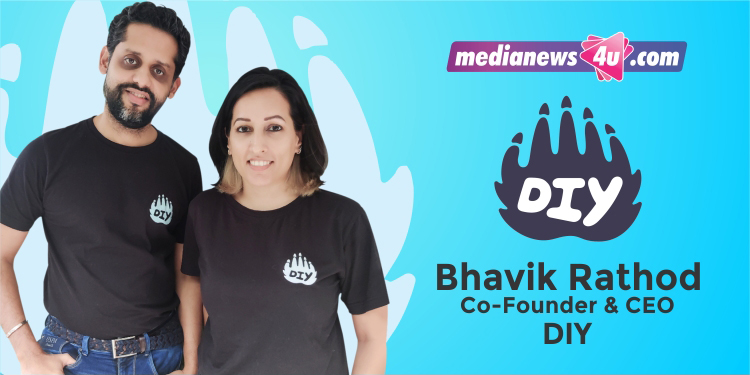DIY Org. an online learning community for kids aged between 5 to 15 years is all geared up to expand its content portfolio in India. The education technology platform recently launched DIY TV; an S-VOD platform designed exclusively for kids in India.
A Transmedia company in the kid’s learning space, DIY TV believes in the power of good screen time for kids. Their vision is to introduce the next generation to specially curated, age-appropriate, global content designed to inspire learning and exploration through active consumption of content. Kids can watch engaging videos or join live workshops and learn, do projects, and share their creations in a safe & moderated community to get peer and mentor feedback.
In an exclusive chat with medianews4u Bhavik Rathod, Co-Founder, and CEO – DIY tells us how they hit upon this idea, how today the kid’s screen time has increased, and how DIY will channelize on how kids can choose and view the content of their choice, and much more…
What made you want to start DIY in the first place?
It’s no secret at this point that 98% of kids have access to a screen today and that there is no running away from the use of gadgets and screens when it comes to kids of this generation. However, a most gadget used by kids today is geared towards passive consumption of content, which doesn’t contribute to their learning or development in any way. Furthermore, with the pandemic, parents are realizing that the future of education is a hybrid between off-screen and at DIY, we choose to believe in the power of good screen time, where the content inspires action. Parents are also comfortable with the access to DIY because it’s a safe and moderated platform for like-minded and like-aged kids, and are seeing their kids engaging with a larger library of content, which wasn’t possible earlier, and creating while learning.
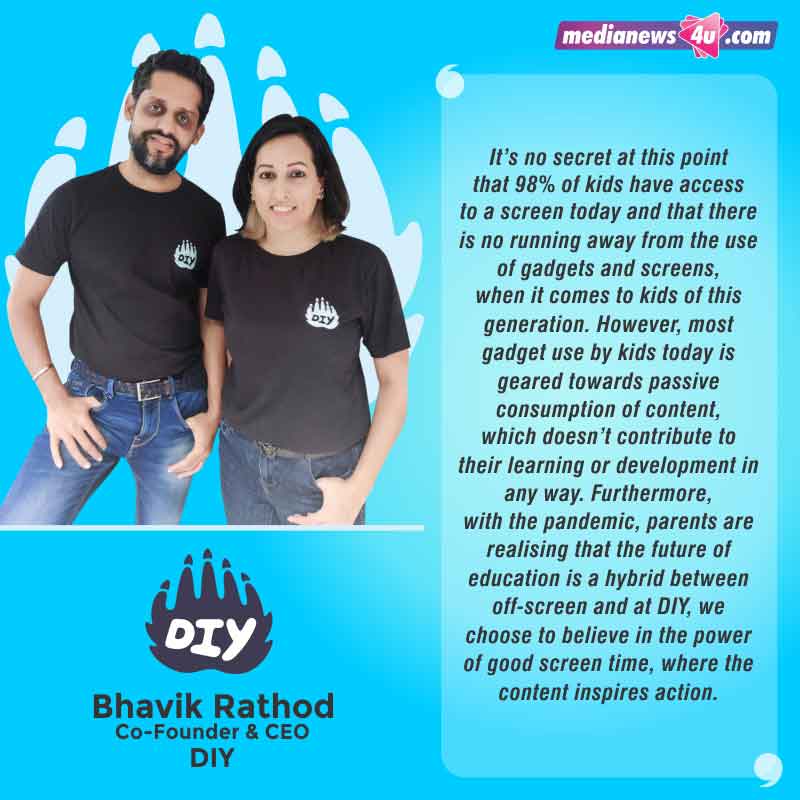
India is a one TV family the lines are blurred between kid’s entertainment and GEC, your thoughts?
With DIY, and the introduction of DIY TV, the content across the platform today is created and curated specifically for kids, and is available across platforms – Web, iOS, and Android, whether on a tablet or a phone app. So kids aren’t limited to the TV set anymore as their screen access and have the opportunity to consume content on an app like DIY, where the library is designed especially for them.
Thanks to the pandemic & online schools, a kid’s screen time have increased; how is DIY trying to optimize this?
Parents have realized that screen time for kids has increased and is here to stay – and our core philosophy of ensuring that all screen time spent on DIY is good screen time is what leads us to better optimize that for the kids who sign up on the platform. No matter the medium – whether a course, a show, or a challenge or project on the platform, kids are able to watch content that inspires them to action, where they can share their learning’s across the platform with other kids, and so, they’re not just passively watching the content from our library.
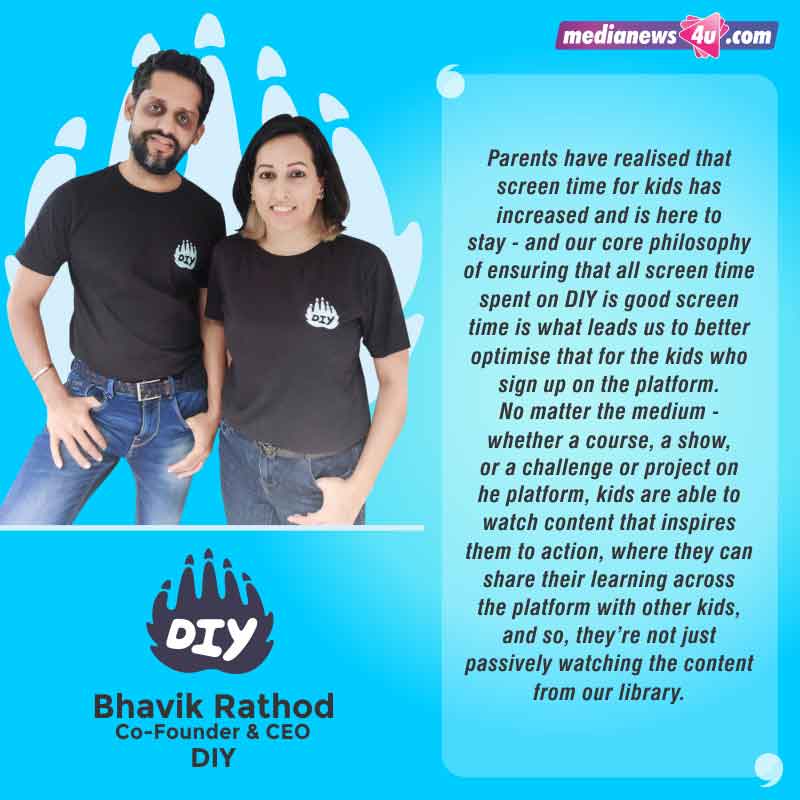
You say it’s your endeavor at DIY to change the way kids consume content, can you elaborate on this?
The DIY vision is to introduce the next generation to specially curated, age-appropriate, global content designed to inspire learning and exploration through active consumption of content. The content offered on DIY revolves around the philosophy of “See-Do-Share”. With hundreds of skills, thousands of challenges, and an ever-increasing library of courses and shows, DIY brings a twist to content viewing, where engagement with content doesn’t stop at viewing. It is then followed by challenges to encourage kids to put into action what they have consumed and share it with their peers in the online community of DIYers, who share their appreciation, and are inspired to try the same. Unlike any other EdTech platform, DIY is all about making learning social for kids.
How does DIY’s content make children innovative and take inspiration?
The content that has been created or curated on DIY is bite-sized and is designed in such a way that it leads the child watching to do an activity right after – so kids are driven and inspired towards taking up challenges and projects that are based on the content they have just watched. This inspiration to watch, learn try something, and share it back within the community also comes from other kids on the platform. At DIY, kids inspire other kids, and when one kid sees another sharing what they have made, as inspiration from what they have watched, it incentivizes them to do the same, and get feedback from their peers, and from mentors and moderators as well.
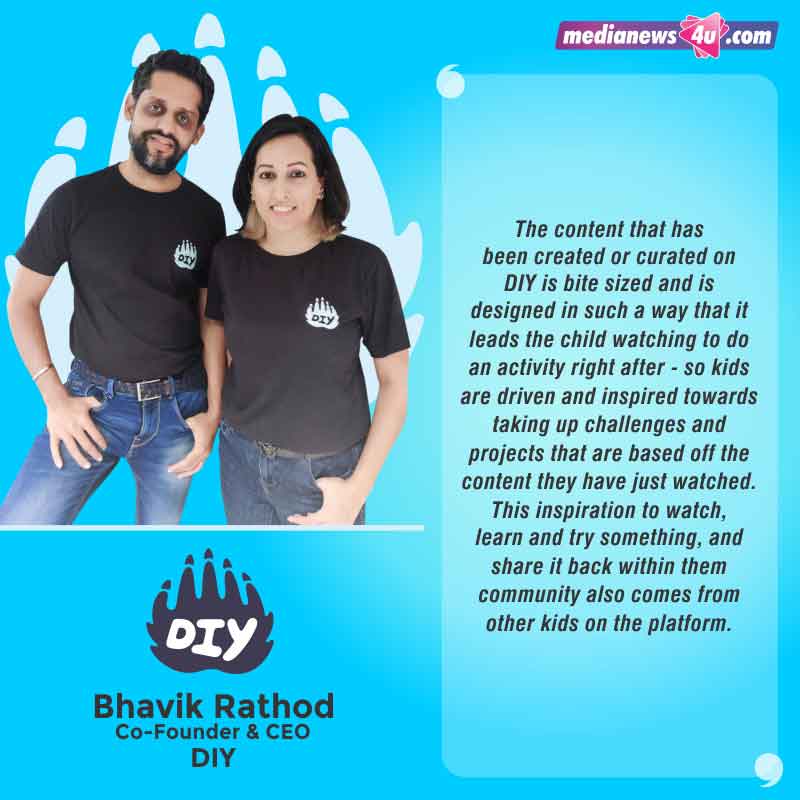
What is the See-do-Share model?
The See-Do-Share model is a simple one, where viewing inspires doing. Kids watch a piece of content on DIY, which is the “See” part of the model. Following this, kids are led to a related challenge or project, where they can try the activity themselves and are inspired to “Do” what they have seen or learned from. And with the social community on DIY, kids are then encouraged to “Share” back what they have learned and created from the content that they watched and the project they attempted, in their own style. And since the platform is a well-moderated one, we ensure that kids are safe from bullies and negativity when they share back what they have created, and are given the right feedback and appreciation, which makes them want to watch, learn and share more.
What is the viewership in India for DIY and what are the geographies and demographics of this viewership?
Thousands of kids across 167 countries in the world are currently our users on DIY, and this includes India. DIY is a global community, and today, most of our users come from the USA, the UK, Canada, and Australia, and India is not only an equally important market but also a fast-growing one, with the user base fast approaching our top charts, in the geographical split.
What are the out-of-the-box marketing ideas and would you be doing school contact programs?
Within our marketing strategy, we are constantly innovating around what kids want to learn, and what they want to do, especially when given a platform like DIY. We run campaigns around the year to bring more kids into the fold, especially one like the summer is Free campaign in 2021, where kids, who get three months of time off from their school routines, were given a chance to explore DIY for free for those three months. And as part of that, we also ran Camp DIY, where kids were given new challenges and tasks every day, competed in teams, and explored the world of DIY as widely as possible – and this was also done to excite kids further into participating in the activities on DIY. When it comes to schools, organically, a few schools from around the world, who share the same philosophy as us of learning by doing, use DIY in their schools. Schools can avail the benefit of a bulk subscription so that it gives them more of an opportunity to enhance the learning of their kids outside the classroom environment as well.
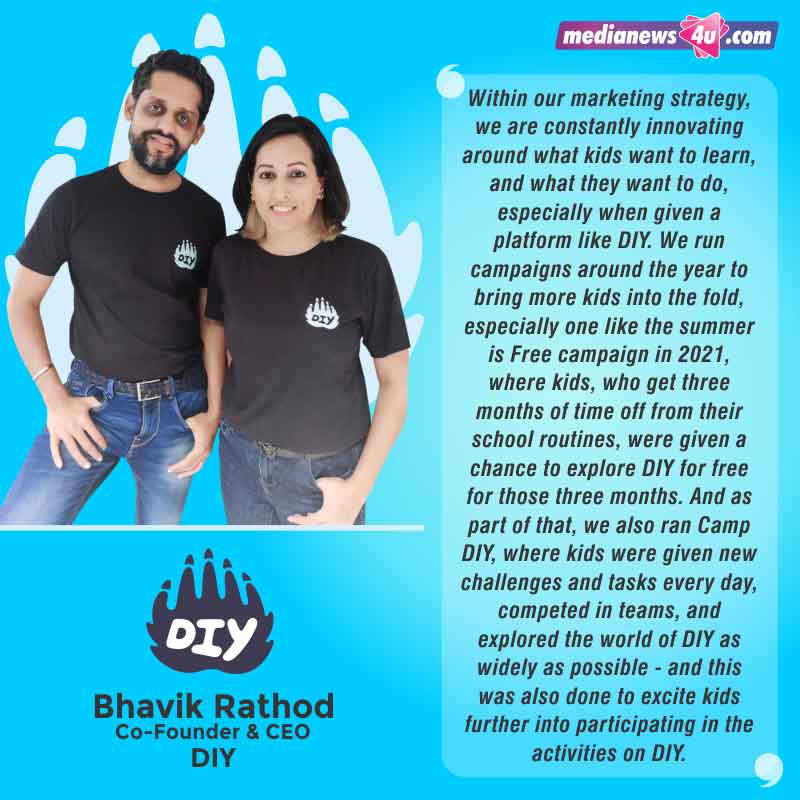
What would be your Focus for 2022?
Our current focus is to find more ways to continually engage kids on the platform, and for this, we are working to introduce gamification as part of the DIY experience, where kids can benefit in more ways than one from their learning experience. We are going to continue to expand our base of live workshops for kids with experts from around the world. And we are also working to increase our library of content, so as to address the growing requirements from kids, and to incorporate the new skills they would like to learn, be it through a course, a show, or a challenge or project on the platform.

